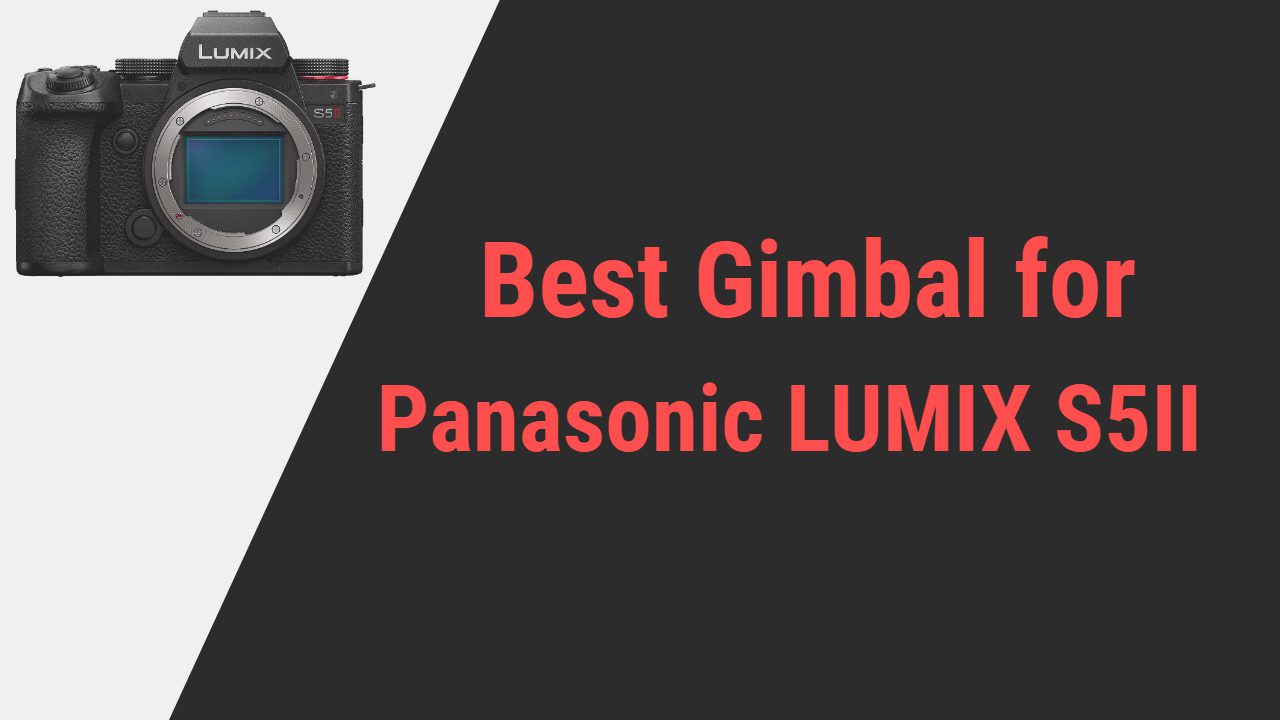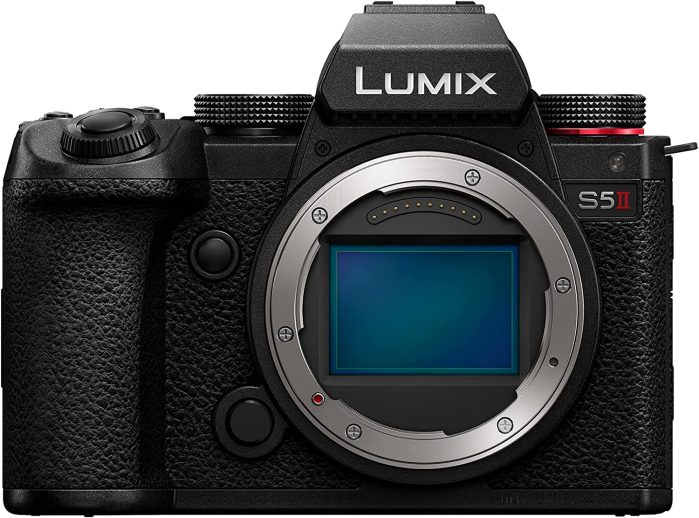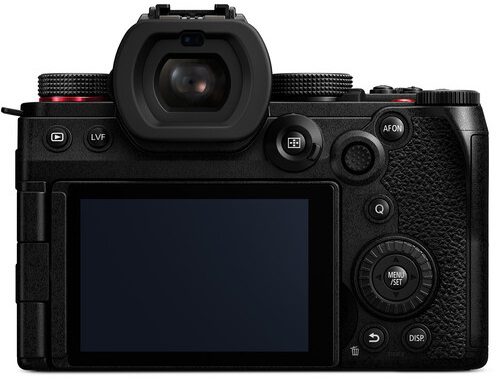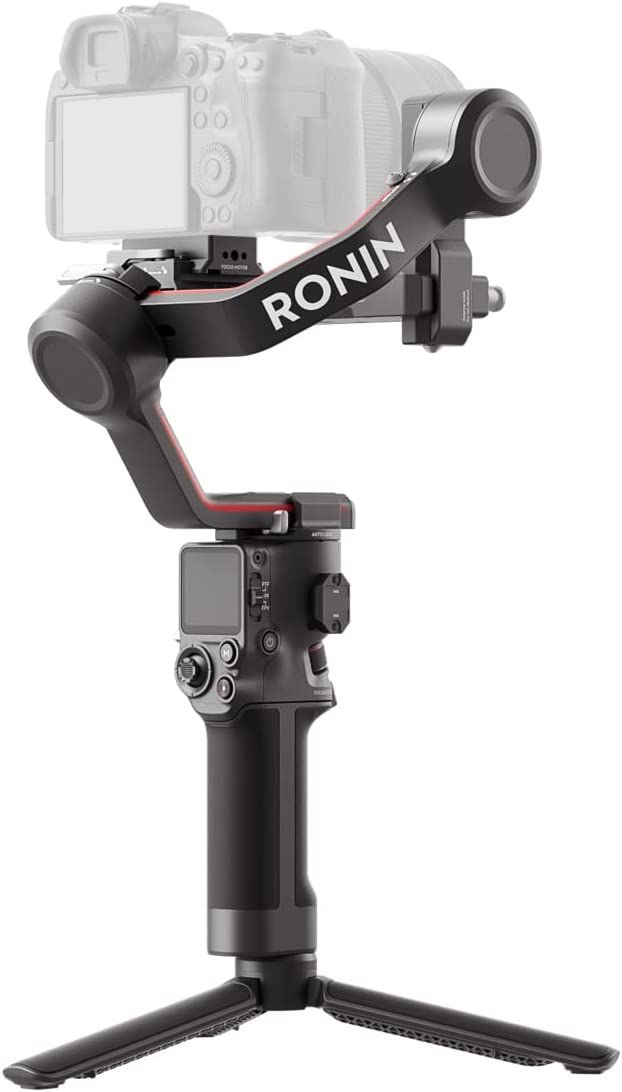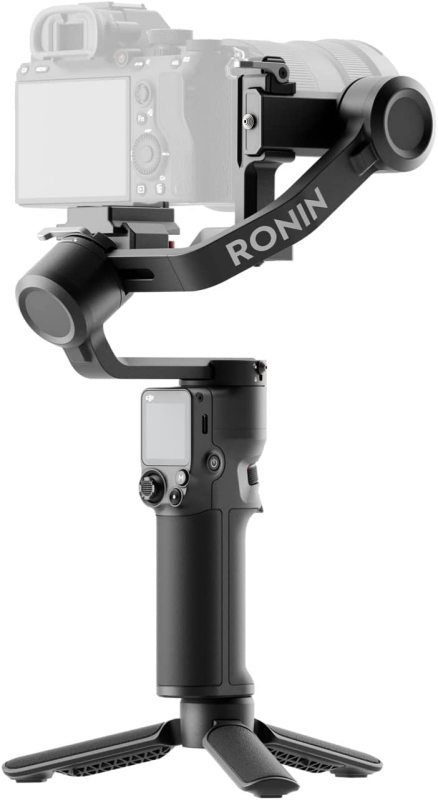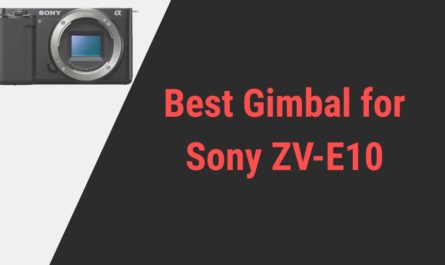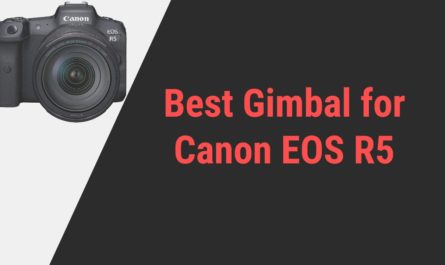The design house of Panasonic has conjured this fully-functional Lumix S5 Mark II camera for conquering flawless photography.
However, if you are a keen photographer, you should know that a camera isn’t enough to capture all the creativity in the world, and for the best, I can conclude, Gimbal is the ultimate key to procuring professionalism.
Now there are tons of gimbals in the market that have the best functional characters, so for me, choosing the finest gimbal is a more challenging task.
However, I knew the secret to finding the ideal gimbal.
With hours of studies and thorough research, I have come to find the best gimbals that will enhance the ravishing expertise of Lumix S5 Mark II.
Scroll down and find the right one and let your Panasonic Lumix S5 shine at its full potential.
Panasonic LUMIX S5 Mark II
Note:
All the gimbals mentioned here are tested with a Panasonic S5 Mark II camera and work perfectly fine.
| DJI RS 3 (Best Overall)

|
| DJI RS 3 Pro (Most High-end - Highest Payload Capacity & Comes with Advanced Features)
    |
| DJI RS 3 Mini (Budget Pick)
    |
Best Gimbals for Panasonic Lumix S5 Mark II
1. DJI RS 3 3-Axis Gimbal for DSLR and Mirrorless Camera
There are no second thoughts about the fact that the DJI brand does hold the most reputed impression in the digital filming industry, A brand that is expertise in crafting some exceptionally innovative pieces that work miraculously.
So when you go out searching for “THE BEST” gimbal in the market of bests, DJI comes to mind first. Thus, starting with one of the fascinating gimbals DJI RS 3
A high-technology modified gimbal with transformative abilities and the potential to create a flawless picture; sounds stunning enough.
Camera– Panasonic S5 Mark II
Gimbal– DJI RS 3 Gimbal
Okay, fame Globally for a reason; It’s incredible. Redesigned DJI RS 3 is one finest gimbal with tough support to stabilize the Panasonic S5 Mark II camera.
Designed for the advanced digital filming camera, RS 3 has the potential to carry a maximum payload of up to 6.6 pounds. Even when its own body has a compact factor and the least weight of 2.8 pounds only.
If that does not blow your mind, I have more.
The stabilization of Gimbal RS 3 is definitely on another level; I can explain why. Equipped with an upgraded third-generation RS stabilization algorithm, the gimbal provides 20% enhanced stability over every shot.
And in addition, it also has a separate supersmooth result, which I am eternally fond of. The mode grants enhanced stabilization over fast-moving scenarios through the increased motor torque.
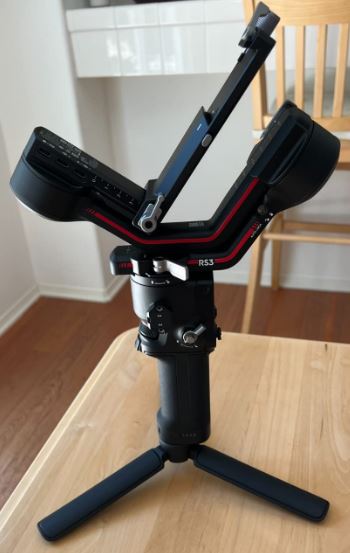

To ease your worry, let me tell you the supremacy of quality stabilization works for the trickiest shots, such as fast-paced subjects or intelligent motion functions shots like Dolly Zoom, Track, or Panorama.
DJI has created this best-selling RS 3 to help professionals with easy controls. The integrated monitoring relies on some effective physical dials such as a fine-tuning knob, simple slider, or front dial.
All to manage the camera position, or switching between different modes, or even adjust camera settings per se.
While there is a way to avoid any interaction during the shoot, and Ronin’s official application is that way. Easily connected through Bluetooth, this application helps with setting parameters.
Also, to spice things up, there is live transmitting support; using a ronin image transmitter, mostly Ronin RavenEye Image Transmitter, you can transfer live feeds directly to the mobile device in 1080p.
If we are talking about the display, DJI RS 3 has another win-win with its wider 1.8-inch OLED panel with a fully colored and touch-screen approach.
Things get even better with the battery runtime; 12 hours of extended runtime on a single charge is all courtesy of the in-built strongest lithium-ion polymer battery charged to 3000 mAh.
The battery featured in the cartridge design ensures comfort while swapping them, especially while charging, which reminds me of the quick charging of 2.5 hours RS 3 has, making it inevitable.
Why should you buy it?
I admire this beauty for its easy handling; I mean, I do feel it has the most effortless controls and enough innovation to create magic in the picture. The performance is fast and convenient also, so a perfect tool for either a professional or a beginner.
Pros
- Super smooth controlling
- Upgraded stabilization technique
- Live transmitting at 30p
- Largest 1.8-inch OLED
- Super Smooth mode
- Strongest power support
Cons
- Should be more durable
2. DJI RS 3 Pro 3-Axis Handheld Gimbal Stabilizer for Lumix S5 Mark II
Moving on to another marvelous gem of the DJI brand, The best-seller DJI RS 3 Pro Gimbal with improved performance rate and powerful features to bring magic to ordinary filming.
Designed with an enticingly strong body with some out-of-the-box functions and the potential to improve the level of stabilization for videographers and vloggers over the DJI RS 3, its earlier version.
Much different, more Alike; DJI RS 3 Pro is a more versatile, professional version of DJI RS 3 with optimized control and handling mostly to handle the advanced camera like Panasonic S5 Mark II
Camera– Panasonic S5 Mark II
Gimbal– DJI RS 3 Pro
The sole motto of “More Power, Better performance” has conjured immense competency in DJI RS 3 Pro making it superior to any other gimbal.
Redesigned to be sleeker but more powerful is proven with its ability to carry a maximum payload of 10 pounds. This 10 pounds figure opens the possibility of attaching a larger camera with additional accessories.
The mounting is easiest with the quick-release plates and automated axis lock; only superior with the involvement of additional ports for accessories. The dual RSA/NATO ports and a separate battery port encourage adding other accessories like a twist grip handle or so.
Power does also come from the construction if you ask. In comparison to the predecessor, DJI RS 3, This RS 3 Pro has the strongest body and enormous strength, all from the layered sheets composite of uncut carbon fiber.
The carbon fiber manages the rigidness but also cares with a lower weight rounding off to 3.3 pounds.
Next comes the stabilization, which is impeccable. The expert hands of the upgraded Third-Generation Stabilization Algorithm approach 20% enhanced steadiness over low-angle, running, or tricky shots. Super smooth mode helps with the finishing.
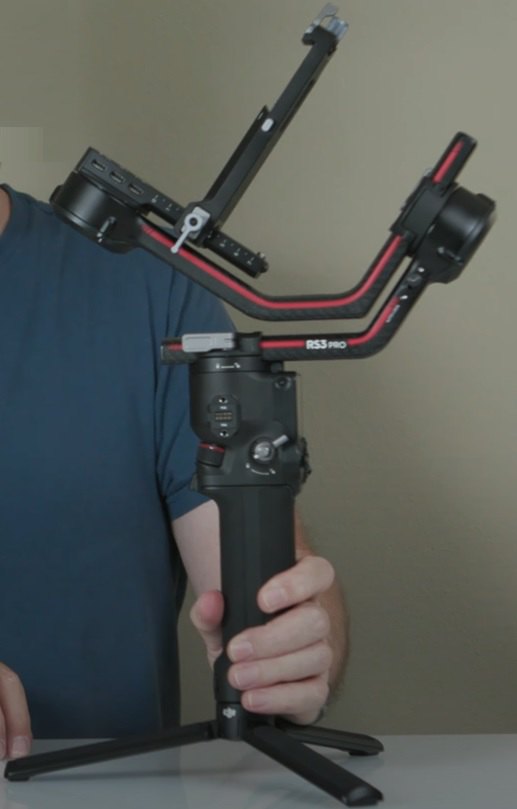

Another unique factor is the engagement of DJI RS SDK protocol usage, which allows quality stabilization for the extensive scenario.
What entices me whole is the RS 3 Pro’s versatility, like the incredible focusing technique.
The focusing gets better with the Ronin 4D’s LiDAR focusing technology. One where the new optional LiDAR range Finder projects 43200 ranging points to get better shots.
Not just it, but I cannot resist working with the upgraded Tracking. The new Active Track Pro version is way too better at monitoring or framing the subject in a more accurate version.
The integrated dials will let you play with the gimbal movement, shutter, and focus kind of things, While the real deal is with wireless controlling through the Ronin official application.
And much like its previous edition RS 3 Pro also supports live transmission through Ronin Raven Eye Transmitter as well as high-bright remote monitoring.
Not to forget the 80% larger display approach through the incredibly convenient 1.8 inched large OLED panel.
Lastly, the power never runs out; a 1950 mAh powered lithium-ion polymer battery proposes extended 12 hours of runtime on a single charge with the better 1.5 hours of quick charging only.
Why should you buy it?
One major reason to love this masterpiece is because of its high-technological character, a powerful level of professionalism none other gimbals can reach. I mean, did you notice the payload, the strength, and versatility of functions? So I don’t see a single reason why you shouldn’t buy this precious tool.
Pros
- Extensive stability coverage
- LiDAR focusing technique
- Improved Active Tracking
- Effectively enhanced stabilization
- Effortlessly accurate control
- Support Highest payload
- Fastest charging support
Cons
- Expensive and Bulky
3. DJI RS 3 Mini 3-Axis Mirrorless Lightweight Gimbal Stabilizer
And finally, A considerably everyone’s favorite and brand new arrived DJI RS 3 Mini is next on the list; a mini, compact, and lightweight stabilizer with standard potential and abilities.
Designed significantly for convenience, DJI RS 3 Mini’s professionalism is not much less than DJI any other gimbal. Supporting a decent payload, this exquisite piece does have a budget-friendly price too.
With minimal challenges in controls and handling, DJI RS 3 Mini is an ideal gimbal for entry-level filmmakers and photographers who are looking for some changes in ordinality.
Camera– Panasonic S5 Mark II
Gimbal– DJI RS 3 Mini
So, the creatively custom-designed DJI RS 3 mini gimbal has a sophisticated character, one that fits best for a mirrorless camera. A single-handed grip gimbal is designed to take up to 4.4 pounds of payload.
Skipping directly to convenience, the gimbal supports the dual-layered plated quick-release support system to mount the S5 Mark II on It.
Gimbal features an integrated NATO mount for additional accessories also.
Updated with the third-generation RS stabilization algorithm, the gimbal explores improved stabilization in every shot, whether it’s different angled or intelligent motion functions.
Weighing the least 1.9 pounds still makes enough space for durability. In contrast, the design of the gimbal keeps steady to impress me. There is the detachable tripod that doubles to the ground to work as an extended grip which is icing on the cake for the whole comfort factor.
You will be pleased to know that the gimbal offers multiple control options. Basics like the gimbal movement, camera shutter, focusing and others can be approached using the gimbal’s physical buttons.
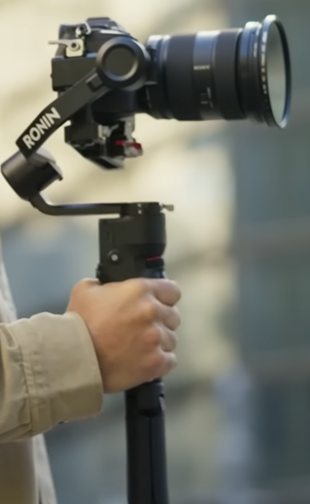

Or, if you are feeling lazy, you can skip to wireless controlling and interpret with the Ronin official application to access all the camera settings.
There is one wide OLED Panel display that is sized 1.4 inches and supports fingertip controlling; This screen works for the vision of what’s going on during shooting.
The improved stabilization in video and photographers can work for the longest 10 hours straight; All credits to the potent Lithium-ion polymer battery empowered with 2450 mAh.
Why should you buy it?
I believe DJI RS 3 Mini has a thrilling impact on me; I prefer this gimbal because it’s way too comfortable to operate. The least weight and optimized things create spectacular convenience during shooting. But let’s not forget RS 3 Mini beholds the cheapest price tag too.
Pros
- Intelligent motion functions shot
- Lighter as feather
- Upgraded stabilization algorithm
- Additional mount for accessories
- Extended tripod doubles
- Reasonable price tag
Cons
- Doesn’t support a lot of cameras
How to get your hands on the right gimbal?
Nowadays, Gimbals are rapidly becoming one of the essential tools for videographers or filmmakers; In the race to capture stable footage, one must choose the best tool.
Gimbal is that key to unleashing artistic effect in every shot, a door to immense creativity; now who wouldn’t want to grab that delicious offer of catching something out of the ordinary in the frame?
It is not as confusing as it sounds, nor is working with the gimbal. The only challenge is how to get hands-on ideal gimbal. How to know which of the hundredth gimbal will be best for my camera?
Let me answer that for you.
A gimbal is an innovatively designed mechanical tool, indulged with its primary obligation of organizing stability in every dynamic shot. Created with upgraded sensors and motors, the gimbal does its stabilizing job effortlessly.
There are some key factors, or you may see characters of the gimbal; these characters can help you get the best.
Just keep this factor in the spotlight when choosing a gimbal,
Camera compatibility– The first and most important consideration will be your camera compatibility. Make sure the gimbal you are opting for is rightfully compatible with your camera with weight, dimension, and other factors.
Gimbal Type– You need to know what you want, and so decide which type of gimbal you will be buying; Mechanical or Motorized, two-axis or three axes. This decision will rely on the type of photography you do
Payload– The payload is another crucial decision; This generally refers to the maximum weight ability the gimbal can support, so if you have a large and heavy camera, go for the higher payload supporting gimbal.
Performance– After the potential, let’s determine the performance. Different gimbals support different stabilization algorithms and ways of stabilizing the camera shake. Choose the authentic and up-to-date stabilization algorithm supported by a gimbal.
Durability– Since your camera will be going to be tucked in the gimbal, ensure the durability of the gimbal. This can be determined through the composite material used in the build, the environment-friendly layering, and the weight.
Mounting– Now, no one would want to struggle with the mounting of the camera in an old-fashioned way or struggle with the frequent rebalancing trouble. So, try to choose the gimbal with quick-release system support.
Battery– You definitely want to make sure that the battery life of your gimbal is sufficient enough for your needs if you are an extended period of time filmmaker. So, choose the strongest battery with longer runtime and the one with replaceable battery options.
Price– The market is filled with hundreds of gimbals, gimbals with a wide range of price points, so you need to choose the one that fits your budget. Know what you are paying for and also invest in a high-quality gimbal for a better performance rate.
Panasonic Enticing creation: Panasonic Lumix S5 Mark II Camera
Panasonic is the master of creating a magical filming device, one with the majestical features. I have been a Panasonic user and fan for quite a long time.
Panasonic had never disappointed, not at this time too; The brand came up with this incredibly capable mirrorless camera with exceptionally high-quality image potential and over-the-top video performance.
The versatile and multi-functional Lumix S5 II mirrorless camera is designed to help both enthusiasts and professionals.
Conspiring with an upgraded sensor, Lumix S5 Mark II is potent to deliver stunning image quality and exquisite dynamic range performance, along with a strong will to create film perfections.


The design house of Panasonic unveiled this advanced camera recently in January 2023
The camera sticks with tons of ravishing features such as focusing, stabilizing, video making and exposure managing this is why it’s a perfect choice for adventure photography.
And also, you can rely on durability because as ergonomic as the Lumix S5 Mark II design seems, there is enough room for strength and rigidness.
Best in flexibility, versatility, and creativity; This Lumix S5 Mark II camera delivers its purpose and satisfies photographers with the extraordinary footage.
Considering the potentiality, It also comes with a reasonable price tag of $1999 for the body only.
Stunning characteristics of the Panasonic S5 Mark II camera
The delight of Panasonic Lumix S5 Mark II filming gets spiced up because of the camera’s notable features. Let’s see what makes the camera so special.
- The camera is designed with an upgraded Venus Engine image processor and CMOS sensor type in full-frame size, One that grants a 24-megapixel resolution to shoot stills.
- The video-centric camera is potent to shoot up to 6K videos at the highest 30p speed, ultra HD 4K videos at 60p, and regular HD videos at the highest 120p speed.
- The camera also supports external recording up to 6k at the highest 30p speed. It also supports fast or slow-motion shooting with no recording limit and a better stereo microphone impression.
- The camera mastered the ability to work with both auto and manual focusing in continuous-servo and single-servo modes with 779 both contrast detection and phase detection points.
- The camera does have dual Native ISO technology, which helps improve low-light performance. The ISO sensitivity ranges from ISO 100 to ISO 51200, which can be expandable to ISO 204800.
- The camera has a fascinating in-built Electronic OLED viewfinder with 100% coverage and 3.6 million dot resolution along with the approx. 0.78x magnification.
- As complementary, the camera also has one free-angle tilting LCD panel for the secondary display, one that is sized 3 inches with 1840K dot resolution and entire touch control.
- The camera engages with both an electronic shutter and mechanical focal plane shutter, different exposure modes, and -5 to -5 EV exposure compensation.
- Each shutter has a speed limit of 1/8000 to 60 seconds. A mechanical stabilizer grants up to 9, whereas an electronic shutter gives up to 30 frames per second continuous shooting speed.
- The camera comes with an in-built five-axis image stabilization that works to sabotage the camera shake with the 6.5 stops of compensation.
- The camera design is configured with Leica L lens mounts which means you can use an L lens mount with the camera or choose a separate adapter for others.
- The camera is designed with two slots for carrying memory cards; both of the slots support SD, SDHC, or SDXC memory cards in the UHS-II bus format for hassle-free storage.
- Other than that, the camera also has 3.5 mm headphones, One HDMI, and One USB-type C power interface. And the support of Wi-Fi and Bluetooth for effortless data transfer.
- The camera has the companionship of a rechargeable Lithium-ion battery charged to 2200 mAh, empowered enough to grant approximately 370 constant shots on a single charge.
- The rugged, weather-resistant body of the camera is composed of Magnesium alloy, firm in structuring and light weighted. This is why the camera has at least a 658-gram weight only.
Frequently Asked Questions (FAQs)
Q. Is Lumix S5 Mark II good for filmmaking?
Designed with the extra dazzling skills of Panasonic, the Lumix S5 Mark II is indeed a masterpiece with strong and impeccable still picture and video performance. However, configured with an upgraded processor directs to the exceptionally smooth up to 6K video recording at the highest 30p speed; this is a huge favor for content creators, vloggers, and filmmakers.
Hosting exquisite filming abilities and an unlimited recording limit Lumix S5 Mark II has proven its worth as a video-centric camera. In addition, the camera associated with a sensor shifts five-axis image stabilization, which deals with the unnecessary shakiness caught during video making; so yeah, a perfect tool for filmmaking.
Q. Is a gimbal better than a stabilizer?
This has been the hot, most debated topic from the beginning; professionals believe that the gimbals are a better tool for capturing smooth and stable footage with not much hassle, which cannot be said the same as the Good old traditional stabilizer.
Gimbals are the ones organized with advanced technology, and they do have access to automatic and upgraded stabilization, which doesn’t come under Stabilizer expertise. So yeah, gimbals are way better options than stabilizers, as they are user-friendly and innovative. However, some people believe Gimbals are sensitive and expensive.
Q. How to add creativity with gimbal during shooting?
There are numerous ways to indulge creativity with gimbal shooting. Gimbals themselves are curated primarily for the creativity factor, but you must know the right way to use a gimbal to propose that character. You can always try to explore different angles and different modes to shoot out-of-ordinary footage.
Other than that, do engage with low-angle shots; this will be caught in a smooth, stable manner; also, lower the sensitivity range; it will help configure every moment sharp and benefits with fast-paced running subjects. There are some gimbals modes you can try like
- Cranes Mode
- Drone shots
- Lateral shots
- Reveal Mode
- POV Swing Mode
Summing up
So that was all, that was ravishing professional grade character of Panasonic Lumix S5 Mark II camera competency and the best gimbals options for such an advanced camera.
Now you know how wealthy results can be achieved using an innovative gimbal. Each of the mentioned gimbals has its own features, versatility, and advantages, while others are affordable or durable in character.
Now it’s up to you to choose the best pick and get started with filming professionalism.
These three gimbals are the best I can get from the market; however, if you want to explore more, find your specific needs, preferences, and budget, and voila, you will get what you need.
This is me bidding goodbye with the stable hope that this article has helped you in finding the best gimbal.
So lay your hand on the right gimbal and take your videography skills to the next level.

